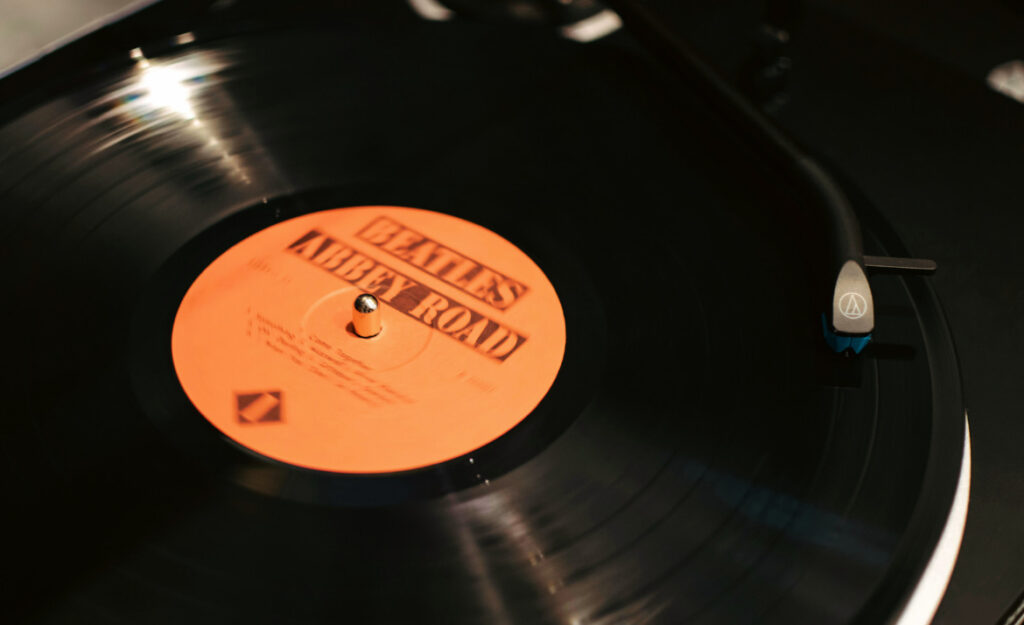
Tucked away in every vinyl collection are tales embedded in label art, catalog codes, and historic marks—making record label history an essential key for collectors wanting to decode hidden value and context behind their favorite pressings.
The legacy behind a vinyl’s record label history influences rarity, desirability, and even the sound quality of the pressing. Understanding it helps you confidently spot originals, reissues, and those elusive first press treasures in the wild.
As you explore the following guide, you’ll learn to recognize subtle label details, spot changes in label design, and pick up practical strategies to enrich your collecting journey with each LP you spin or shelve.
Recognizing Label Variations and What They Reveal
Collectors can instantly boost their expertise by noticing distinct label variations. These differences might look minor at first but they point straight to the pressing era, origin, and vinyl’s true lineage.
For example, some collectors scan for slight changes in font, logo size, or even the shade of color on a record’s label. Understanding these subtleties is a direct path to identifying a rare early pressing over a more common reissue.
Spotting Key Design Changes Over Decades
Let’s say you’re flipping through a crate and spot an iconic blue-and-silver label. You glance at the typeface and instantly place the pressing to the late 1950s—using label history as a fast, reliable shortcut.
Meanwhile, finding a label with a different logo or updated text placement suggests a later run. Comparing label graphics against reference images trains your eye to spot true originals without hesitation.
Consulting label guides or using community forums for side-by-side image comparisons can save hours and help confirm your instincts before any purchase.
Interpreting Matrix Information with the Label
Pairing runout matrix numbers with label designs offers a powerful combo for conclusive identification. Collectors check if the label style matches the catalog and matrix details—preventing accidental buys of mismatched hybrids.
For instance, if a classic jazz LP has a first-press matrix paired with a later-era label, you’ll know it’s a hybrid. Use both visual and etched clues to build a fuller story for each record.
Collectors write detailed notes and take clear photos in-store. It’s routine for serious buyers aiming to document and cross-verify, safeguarding their investment and growing their expertise with every outing.
| Label Variation | Pressing Era | Identifiable Clue | Takeaway |
|---|---|---|---|
| Original Blue Note “47 West 63rd” | 1957-61 | Address in rim text | Signals first pressing with premium value |
| Columbia “Six-Eye” Stereo | 1958-62 | Six eye logo, bold font | Early stereo issues, desirable for collectibility |
| Motown “Map” Label | 1965-72 | US map design with Motown address | Ties release to Detroit’s classic era |
| Atlantic Green & Orange | 1967-73 | Color split, larger logo | Identifies late ’60s to early ’70s pressings quickly |
| Apple Records Dark Green | 1968-75 | Full apple image | Found on Beatles and select solo albums, instantly recognizable |
Decoding Color Schemes and Fonts for Dating Pressings
Every label’s color and font choice acts as a historical marker you can observe instantly. Gaining this skill lets you confidently date records and separate true firsts from later mass-produced versions.
You’ll notice that small tweaks—like a bolder font or a label’s shift from mono to stereo—highlight transitional periods. This gives context to the pressing, value, and even audio presentation as stereo mixes evolved.
Using Color Patterns to Identify Originals
Original pressings frequently lean on striking, saturated color palettes. These sometimes fade with reissues or modern represses, making color retention a subtle clue for savvy collectors seeking record label history insights.
- Compare label color saturation against known reference scans to avoid faded later pressings that might seem older.
- Check if labels use two-tone or split colors—a common trend in late-1960s to 1970s pressings—signaling an era.
- Spot transitions from black-and-white to colored logos, which usually coincide with shifts in the label’s ownership or manufacturing deals.
- Look for metallic inks or foil stamping, especially on 1950s-60s jazz or classical labels, to pinpoint premium early editions.
- Cross-check label hue with associated catalog numbers, ensuring consistency across all sources before sealing a trade or sale.
Apply this color-identification checklist each time you examine a prospective purchase. Over time, your pocket knowledge base of label variants will become second nature.
Distinguishing Fonts to Confirm Era and Authenticity
Fonts are just as important as color for accurate record label history dating. Some labels used custom typefaces unique to a five-year window or specific subsidiary.
- Match serif or sans-serif style to known production runs by referencing reputable image databases, not just memory.
- Note changes from hand-stamped to machine-printed fonts, which signal a shift in scale and era authenticity.
- Watch for script lettering often used on specialty jazz and early blues labels, reinforcing period authenticity.
- Identify font size and spacing irregularities; these were commonplace before standardized mass-printing, so they’re prime authenticity markers.
- Correlate font updates with mergers or label buyouts—many labels updated their branding and font after such events.
Using font nuances as a cross-reference helps verify label history details and guides you toward better-informed buying decisions every time you shop for vinyl.
Understanding Label Subsidiaries and Their Unique Markings
Once you spot a new label name within a familiar company, you’ve encountered a subsidiary. Recognizing these helps you accurately trace the parent label’s evolution and pinpoint rare imprints.
This is crucial for genres like soul or punk, where small sub-labels handled limited pressings. You’ll discover nuggets of record label history overlooked by casual collectors focusing only on major imprints.
Differentiating Between Parent and Subsidiary Imprints
Imagine holding a Stax Records LP with a Volt imprint; the subtle change in logo design or catalog prefix will clarify its origin in seconds. Each subsidiary had distinct cataloging habits.
If a collector describes an LP as “on Reprise but with a tri-color label not found elsewhere,” you know it’s a unique sub-label period. Recording these points helps you chart label family trees over decades.
Marking subsidiaries in your collection notes makes it easier to recall value peaks or label-only collectible runs from specific years, improving your trading and collecting insights daily.
Identifying Subsidiary Label Codes and Hidden Gems
Check the fine print for subsidiary-specific details—catalog prefixes, alternate logos, and rim text all point to a pressing’s backstory. Double-check this info when pricing or authenticating online finds.
For instance, look for “Elektra/Asylum” or “Warner Bros. Seven Arts” on the rim; these combos mark transitional pressings that occasionally slip past less-experienced sellers.
Flagging LPs tied to niche subsidiary runs helps you chase after low-press favorites, sometimes issued in only a few thousand copies before full label absorption.
Reading Catalog Numbers and Label Codes Like an Expert
The catalog number tucked beside a label logo is your instant indexing tool. Unlocking the number’s logic means never guessing an LP’s place in the timeline or missing rare export pressings again.
Once you spot a pattern—say, the difference between “SR” (stereo) and “MG” (mono) on Mercury labels—you can target the most collectible editions with confidence.
Breaking Down Catalog Number Structures
Dated codes or prefixes (such as “CL” for Columbia mono versus “CS” for stereo) allow you to nail down release era and configuration neatly, crucial for tracking the record label history of classic catalogs.
Capture catalog sequences in your notes. Example: if you log Blue Note’s transition from “BLP” to “BST,” you’ll more easily sort mono and stereo runs, and even recall mastered-to-tape years.
Referencing discography books reinforces catalog number literacy, empowering you to bypass confusing reissues or bootlegs at record fairs and online auctions.
Applying Label Codes When Shopping and Selling
Label codes help you avoid buying misrepresented records. For instance, European and Japanese pressings use extra letters (“YEX”, “EMS”) that steer collectors towards the precise country of origin without guesswork.
Double-checking these codes prevents swapping out valuable originals for high-quality, but less valuable, modern reissues; it’s a key skill for safe and strategic collecting.
Logging both catalog and label codes in your collection lists lets you sort and filter your shelves or digital files instantly by year, country, or even matrix variation.
Tracking Label Ownership Changes and Their Impact on Collectibility
Grasping ownership shifts in record label history prepares you for spikes in value and shifts in pressing quality. This directly affects how you prioritize rare originals or overlooked era crossovers for your collection.
A change in label hands—say, when Atlantic absorbed Stax or when EMI merged with Capitol—often led to distinct label redesigns and even production location changes, all traceable through close label inspection.
Collectibility Impact When Labels Merge or Are Sold
Limited runs produced during transition periods—like “Warner Bros./Seven Arts” labels—often become cult favorites due to their short lifespan. Savvy collectors track these cross-era logos to uncover underappreciated gems.
Once brand control consolidates, label consistency usually increases. New labels may standardize design or move manufacturing to new plants, subtly altering quality and appearance for future pressings.
Spotting a distinct label design (often with both old and new corporate symbols) signifies this transitional window. Mark transitional runs in your want-list; they frequently grow in collector value over time.
Pressing Quality Shifts as a Result of Ownership
Ownership moves don’t just affect logos—they also shift pressing quality, as vinyl plants and mastering engineers rotate. Collectors chase pre-merger runs for superior materials or original analog mixes.
It’s not uncommon for a post-merger division to re-cut classics with new stampers or change the vinyl formulation entirely, resulting in sound differences visible to the trained, label-history-aware collector.
Compare pressings side by side. If two “identical” LPs sound different, their labels often reveal who pressed them, when, and under which corporate regime—bridging audio reality and record label history every time.
Building Trackable Label Histories in Your Vinyl Collection
Organizing your collection by label history not only adds scholarly value, it simplifies resale, insurance claims, and sharing your knowledge with fellow collectors in person or online.
Regularly updating a database or spreadsheet with label variant details and catalog codes keeps your compilation accurate for years. Over time, you’ll build a resource that benefits both personal enjoyment and broader community knowledge.
Practical Systems for Documenting Label Details
Establish categories for each label, era, and pressing change. Template example: Label Name, Pressing Year, Catalog/Matrix Details, Condition, Unique Notes. Use this both in digital archives and written logs for redundancy.
Gather high-quality label scans for all notable pressings. Each scan becomes a reference point for future acquisitions and a verification asset for trading or selling to other collectors.
Include room for anecdotal notes: where you acquired the LP, special provenance, or personal stories about spins. These details enrich the label history alongside the hard catalog data in your records.



